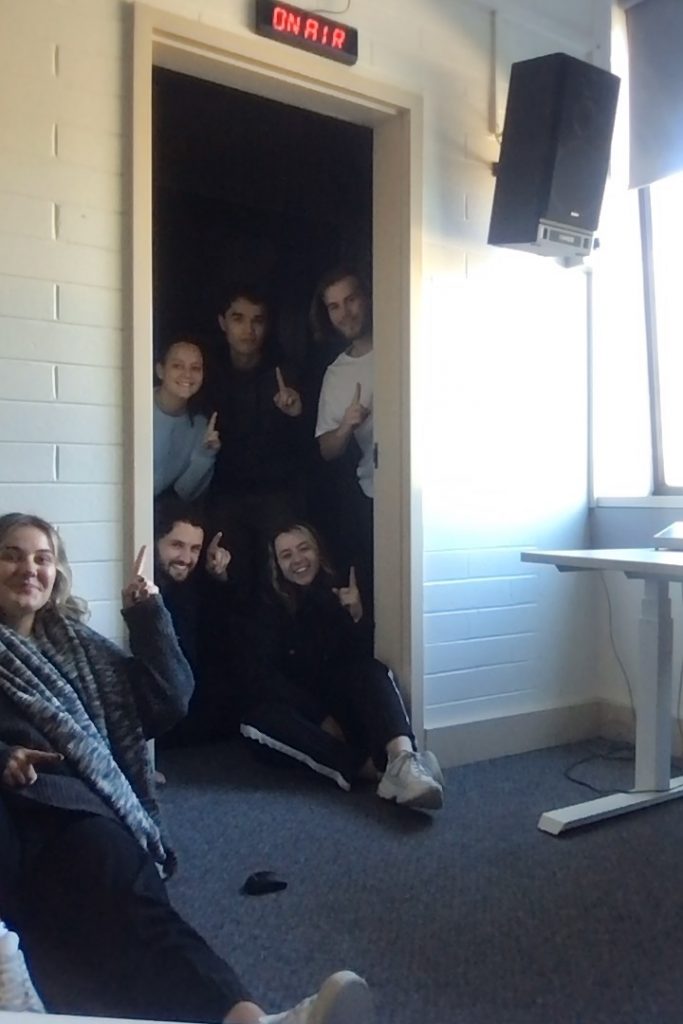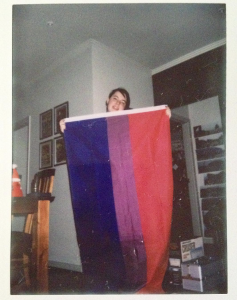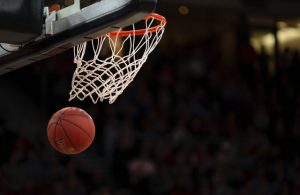Finding a new passion with Haikyuu season 1
A piece of media can influence you in ways you never would have imagined. You might feel inspired by Bruce Lee or Jackie Chan and their passion for martial arts, or Stand By Me, which could spark an adventure with your own friends, or even your favourite album could lead you to try music production. The first season of the anime, Haikyuu, has all the elements for a heavily inspirational show.
In this interpretation of “anime boys doing sport very well”, we start with Hinata Shoyo, a short, yet spunky boy in the 9th grade with a newfound love for volleyball, and a dream of becoming the “Little Giant”. A player who could beat even the tallest blockers, despite his small stature. The only problem for Shoyo is that he’d never even played a game before, and his school didn’t have a team. After becoming the only member that year, it takes a huge effort to gather a team of inexperienced friends who would help him compete in the last competition of the semester.
Happy Birthday Hinata! #haikyuu #haikyu https://t.co/fNikg6YR92 pic.twitter.com/B8PwPaA4eH
— Sentai (@SentaiFilmworks) June 21, 2016
This competition brings Shoyo to his first real volleyball game, but adversity strikes as they have to play against the top school in the region, and battle against Kageyama Tobio, a player referred to as the “King of the Court” because of his unmatched ability, arrogance and harsh leadership which leads his team to resent him. The match-up is extremely tough, and Shoyo and his friends give their all, but they can’t compete and lose the match. Shoyo’s athleticism and potential do not go unnoticed by Tobio, who cannot help but be angry at the wasted potential. Shoyo’s team was utterly defeated and left heartbroken, but the seed was planted. Shoyo would continue to fight to “stay on the court” in high school, proclaiming that he would one day beat Tobio.
Happy 6th Anniversary to the Haikyu!! TV Anime! The hit anime series made its premiere in Japan on April 6th, 2014.
A huge Thank You to all the hardworking and dedicated cast and staff team who've worked on this series for the past 6 years! pic.twitter.com/LjhpWzEO5n
— HAIKYU!!=͟͟͞͞🏐 (@Haikyu_EN) April 6, 2020
From the first episode, it appears that the show will heavily focus on Shoyo, with the main antagonist being Tobio. Many other sports anime focus on a main character or even a small cast of main characters, and an antagonist to defeat, but as we move on to the second episode, we quickly realise that this is not the case for this anime. This is what really brings its audience to love not only the anime, but volleyball itself.
The second episode brings us to Shoyo starting high school at Karasuno High, the school that, the now graduated, “Little Giant” played for. It quickly turns out that Shoyo will not be able to reach his goal of beating his rival Tobio though. To both character’s surprise, they are attending the same school and will play for the same team. It is from here, that the show begins to show its true colours, not as a sports anime, but one heavily focused on all its characters and their growth while playing volleyball.
Many anime fans like to do a “three episode test” to see if an anime is worth watching, and I think that Haikyuu easily achieves this in two. The show perfectly sets up what the rest of the season will bring with its character introductions, volleyball, and its own style of comedy. The constant bickering between the rival teammates, Shoyo and Tobio, the addition of another troublesome duo named Tsukushima Kei and Yamaguchi Tadashi, and the dynamics of the older, more experienced members, make for character interactions that never get old, and only get better as more friends and rivals join the cast.
Takahiro Kishida's Haikyu!! Anime Designs (S1-S4) pic.twitter.com/21uVtjdPS2
— HAIKYU!!=͟͟͞͞🏐 (@Haikyu_EN) September 22, 2019
What sets Haikyuu apart from other sports anime, is its devotion to its characters. Starting out slowly, we learn about our main protagonist Shoyo and then about Tobio, and then it expands to the Karasuno team, and then further into other school’s players. As the team plays against different schools we are introduced to a number of their players, exposed to their backstories to varying depths, and explore the relationships they have with Karasuno’s team. No matter how insignificant the team may be to the overall series, at least one player per team is used as a tool to have a lasting effect.
It’s very rare that someone would come out of watching an episode which includes a match, not wanting to get into volleyball. I think this is not due to the actual playing of volleyball, but the characters and their interactions throughout the anime, on and off the court. The strong bonds that the players create through their love for the sport, transcending rivalries or previous humiliations on the court, feel so real and almost create a feeling that the viewer might be like Shoyo, when he first witnessed the Little Giant on TV. As the stakes get higher, and the characters grow as people and players, the level you are emotionally invested in the team grows too. This is heightened only by the volleyball games and the fantastic style of animation throuoghout.
THE VOLLEYBALL BOYS ARE BACK! Sentai Filmworks licenses Haikyu!! 3rd Season. #haikyu #haikyuu https://t.co/qabbOxPE1l pic.twitter.com/N2btO2aPZA
— Sentai (@SentaiFilmworks) October 7, 2016
It is extremely hard to find a match that stands out above the rest. I think all of them equally leave a lasting impression. Every match, no matter how insignificant it may seem, is set up to progress our understanding of different characters and their growth. I think that the matches played against the first team that Karasuno takes on may hold a little more weight than the others, however. For the match-ups with the powerhouse school, Aoba Josai, we explore not only who the players are, but look deeper into their relationship with Tobio. The biggest success of these match-ups is the amount of character that are added not only to the Aoba Josai team, but to Tobio’s team as well. This allows us to empathise with him and find him more likable, even with his continuing arrogance. The exploration of his team’s members hold a lasting effect over how we view the Karasuno players, and Tobio’s significance to the team, which makes them very special.
劇場版総集編「ハイキュー!! 勝者と敗者」BD&DVDの、岸田隆宏さん描き下ろしジャケットを解禁しました!劇場で見逃した方も、もう一度ファーストシーズンのおさらいをしたい方もぜひ!http://t.co/i4q9FsMukX pic.twitter.com/EFCBT7xQXK
— アニメ「ハイキュー!!」 (@animehaikyu_com) October 19, 2015
Usually, the worst thing a sports anime could do is to take the audience out of the game to deliver exposition. I think that Haikyuu sets up each game so well, that each flashback and pause for inner thoughts, which come often between points or substitutions, do not take you out of the matches. They only add to them. The heightened emotion that comes from the growth we see, and the reactions from their teammates and opponents, create a level of excitement that other sports anime would find hard to replicate.
There is one character that is badly implemented though, but this is something that is a wider issue with anime in general. The team’s manager, Kiyoko Shimizu, is one of the only female characters in the series, and in true anime fashion is mostly left to just be pretty, and be doted over by the male leads. Being the team’s manager, there is plenty that she would be doing behind the scenes for the team, but is not usually shown. When it is, she ends up blushing and running away like the cute girl she has to be. She could have easily been written better, but it is most definitely the way it is due to the culture that has been created around women in boys’ sports anime.
【キンキュー!!一挙上映会】明日の特番では、出演の村瀬さん・石川さん・SPYAIRさんの、どこか部活感ある掛け合いもご注目!色々とツイートもします!東京遠征に向けぜひ!ぐああああっと盛り上がりましょう…!!!#hq_anime pic.twitter.com/pPJGPjuqqB
— アニメ「ハイキュー!!」 (@animehaikyu_com) October 23, 2015
The show’s animation is basic for the most part with the exception being when games are shown – this is when a big impact on the viewer is emphasised and the show goes all out. The stylisation that is used to create a huge impact from serves and spikes, the use of slow motion to heighten any tension, and an exaggerated sense of scale to make the tallest players look like giants create a satisfying aesthetic that comes from the games.
Overall, the first season of Haikyuu masterfully handles the sport of volleyball, and perfectly portrays the characters it wants to. The show does this so that it is not only an enjoyable anime, but can make the audience want to join in on the sport. If anyone is looking to get into a sports anime, or any anime at all, you cannot go wrong with Haikyuu.



Be the first to comment!